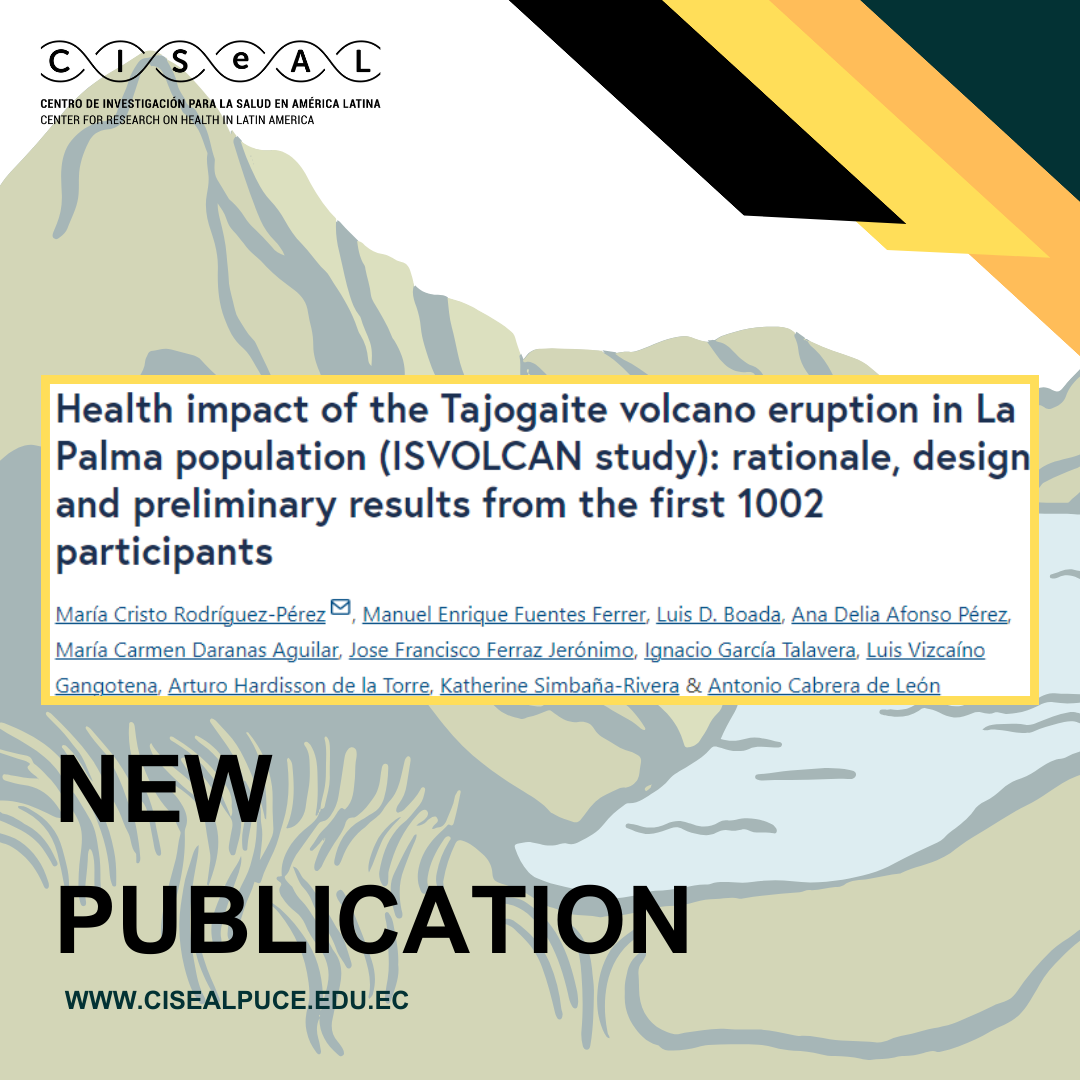
The eruption of the Tajogaite volcano began on the island of La Palma on September 19, 2021 and lasted 85 days. This study aims to present the design and methodology of the ISVOLCAN cohort (Impacto en la Salud de la Población de La Palma debido a la Erupción Volcánica), as well as preliminary results from the first 1002 participants enrolled. In the midst of tumultuous events, this comprehensive study was launched to investigate the profound impacts of this volcanic event on the health and well-being of the local population. This study aims to elucidate the complex relationship between volcanic activity and public health, shedding light on its design, methodology and initial results. In this article, we present an overview of the study framework and outline the initial results obtained from the participation of the first 1002 people.
A prospective cohort study was conducted with random selection of adult participants from the general population, with an estimated sample size of 2600 individuals. The results of the first 857 participants are presented, along with a group of 145 voluntary participants who served as interveners during the eruption. Data on epidemiology and volcano exposure were collected, and participants underwent physical examinations, including anthropometry, blood pressure measurement, spirometry, and venous blood extraction for toxicological assessment.
In the general population (n = 857), descriptive analysis revealed that the participants were mostly middle-aged individuals (50.8 ± 16.4), with a predominance of females. Before the eruption, the participants resided at a median distance of 6.7 km from the volcano in the Western region and 10.9 km in the Eastern region. Approximately 15.4% of the sample required evacuation, whose 34.8% returning to their homes on average after 3 months. A significant number of participants reported engaging in daily tasks involving cleaning of volcanic ash both indoors and outdoors. The most reported acute symptoms included ocular irritation, insomnia, mood disorders (anxiety-depression), and respiratory symptoms. Multivariate analysis results show that participants in the western region had a higher likelihood of lower respiratory tract symptoms (OR 1.99; 95% CI:1.33–2.99), depression and anxiety (OR 1.95; 95% CI:1.30–2.93), and insomnia (OR 2.03; 95% CI:1.33–3.09), compared to those in the eastern region.
You are invited to read the full article here: https://ehjournal.biomedcentral.com/articles/10.1186/s12940-024-01056-4#:~:text=The%20eruption%20generated%20a%20significant,deleterious%20effects%20on%20human%20health



